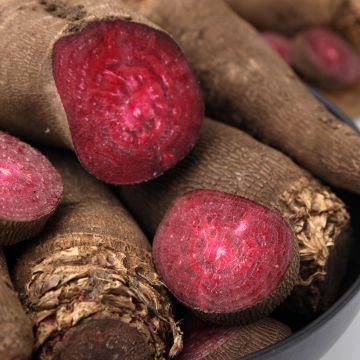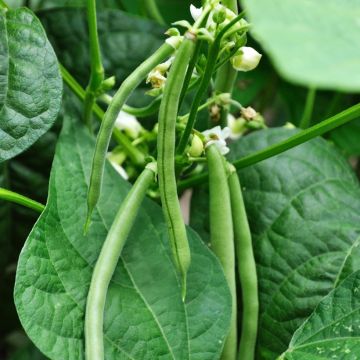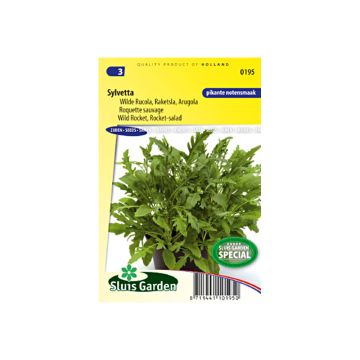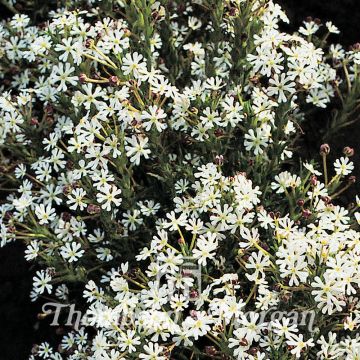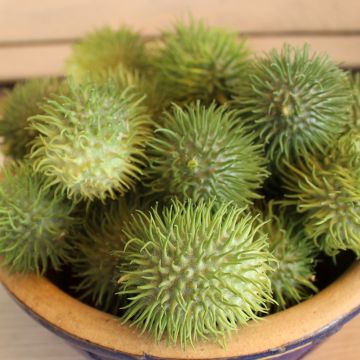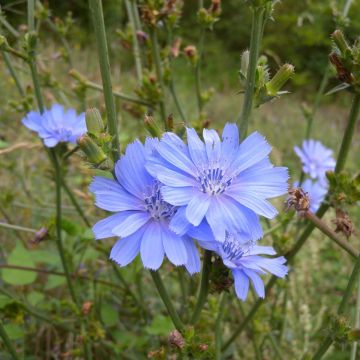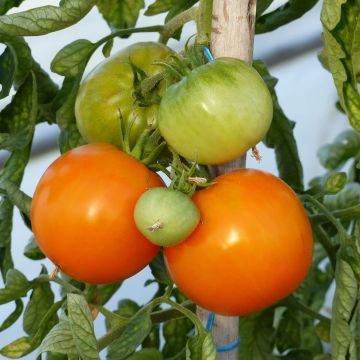

Organic Balbis Nightshade - Ferme de Sainte Marthe seeds


Organic Balbis Nightshade - Ferme de Sainte Marthe seeds
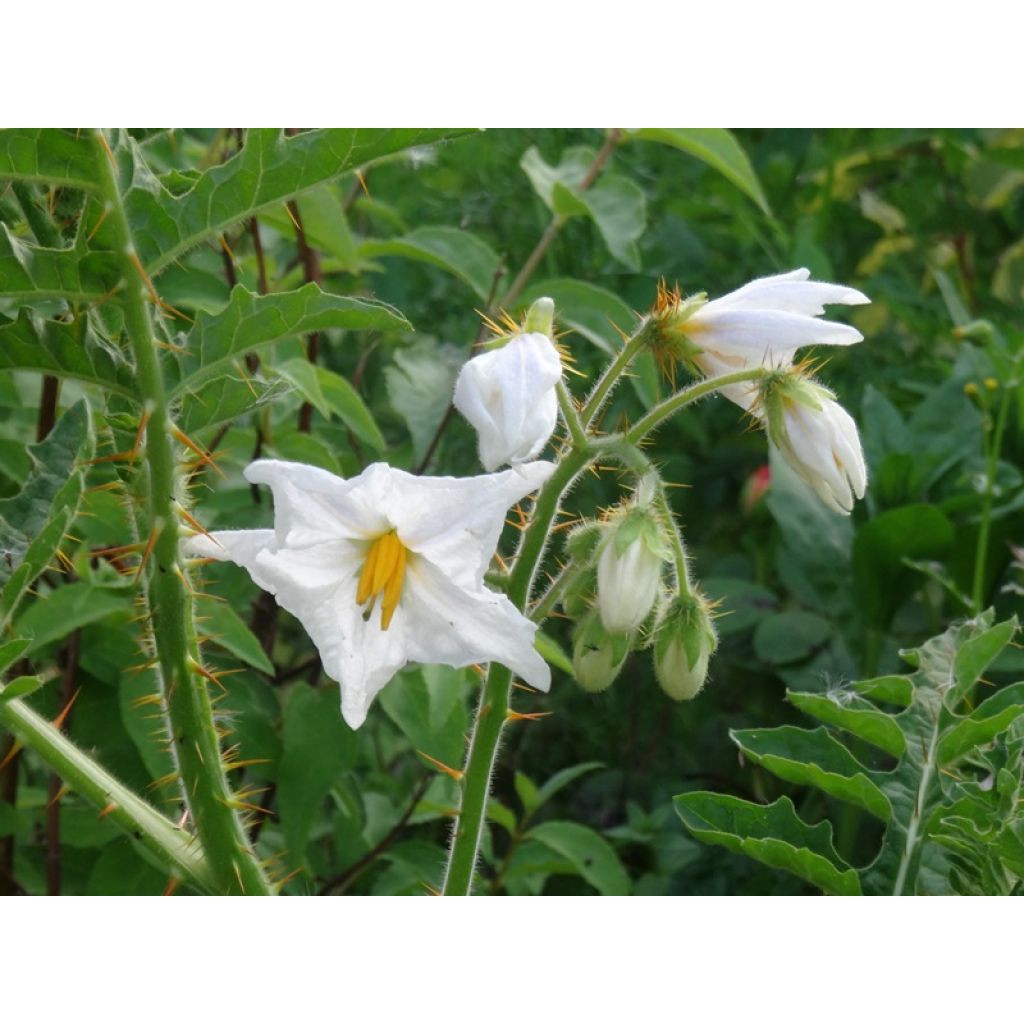

Organic Balbis Nightshade - Ferme de Sainte Marthe seeds


Organic Balbis Nightshade - Ferme de Sainte Marthe seeds
Organic Balbis Nightshade - Ferme de Sainte Marthe seeds
Solanum sisymbrifolium
Sticky Nightshade, Red Buffalo-bur, Fire-and-Ice Plant, Litchi Tomato, Morelle de Balbis, Wild Tomato
This item cannot be shipped to the selected country
Dispatch by letter from €3.90
More information
Schedule delivery date,
and select date in basket
This plant carries a 6 months recovery warranty
More information
We guarantee the quality of our plants for a full growing cycle, and will replace at our expense any plant that fails to recover under normal climatic and planting conditions.
Seed-only orders are dispatched by sealed envelope. The delivery charge for seed-only orders is €3.90.
Description
The Litchi Tomato, also known as Sticky Nightshade, Morelle de Balbis or Sisymbrium Leaf Nightshade, is a very unique fruiting plant. It is cultivated for its red berries, which have a sweet taste that resembles lychee. It forms a beautiful thorny bush of about 1.2 metres (4 feet). Its cultivation poses no difficulty: it is sown like tomatoes, from March to April, for harvesting from late July until the first frost.
Sometimes presented as the ancestor of the Tomato, Sticky Nightshade (Solanum sisymbrifolium in Latin) is native to South America and belongs to the Solanaceae family. It is a perennial frost-sensitive plant that is generally cultivated as an annual in European climates.
Its habit is quite indeterminate, it can reach a height of 1.5 metres (5 feet). Its foliage is deciduous and composed of large green, pinnatifid leaves. The entire plant is thorny: its branches, its leaves, and also the calyxes that surround the fruits. It blooms from June to August in the form of small white or slightly bluish five-petaled flowers. It produces round red berries, about the size of a cherry tomato, at the end of summer, grouped in clusters.
The Litchi Tomato grows very well in European climates. It likes the sun and rich, light, and well-drained soil. Like tomatoes, it needs to be staked, and it can also be grown in a sufficiently large pot.
The fruits of Sticky Nightshade can be eaten raw, like Peruvian Groundcherries, but they can also be cooked, made into compote, jam, or jelly.
In the garden, you can plant Sticky Nightshade alongside your other red berries, but be careful of its thorns and avoid planting it near a frequently used pathway, because whoever touches it will get pricked! However, this inconvenience has a big advantage because its numerous thorns deter thieving birds.
Harvest: The harvest takes place from late July to the first frost, and the fruits are ripe when they can be picked without the risk of being pricked.
Storage: The fruits can be stored for a few days in the bottom of the refrigerator, but it is preferable to consume them soon after harvest.
Gardener's tip: Sticky Nightshade is known in market gardening for its ability to fight nematodes. When cultivated in an infested plot, it is believed to eliminate them thanks to a substance secreted by its roots.
Report an error about the product description
Harvest
Plant habit
Foliage
Botanical data
Solanum
sisymbrifolium
Solanaceae
Sticky Nightshade, Red Buffalo-bur, Fire-and-Ice Plant, Litchi Tomato, Morelle de Balbis, Wild Tomato
Cultivar or hybrid
Annual
Other Vegetable seeds from A to Z
Planting and care
Sowing:
Sowing of Sticky Nightshade is done from March to April at a temperature of 20°C (68°F) (indoors or in a heated greenhouse). Sow in a tray or directly in a pot filled with good sowing compost that you will keep moist but not waterlogged until germination, which usually takes about a week. Once the plants are well developed, transplant them into a larger pot if necessary.
Morelle de Balbis can be planted in the garden when there is no longer any risk of frost, usually around mid-May. It thrives in sunny, rich, light, and well-drained soil. Like tomatoes, it needs to be staked and can also be grown in a sufficiently large pot.
Cultivation:
Its cultivation is easy. Remember to mulch the base of the plant to keep the soil fresh and avoid planting it near Eggplants and potatoes.
Seedlings
Care
Intended location
This item has not been reviewed yet - be the first to leave a review about it.
Vegetable seeds
Haven't found what you were looking for?
Hardiness is the lowest winter temperature a plant can endure without suffering serious damage or even dying. However, hardiness is affected by location (a sheltered area, such as a patio), protection (winter cover) and soil type (hardiness is improved by well-drained soil).

Photo Sharing Terms & Conditions
In order to encourage gardeners to interact and share their experiences, Promesse de fleurs offers various media enabling content to be uploaded onto its Site - in particular via the ‘Photo sharing’ module.
The User agrees to refrain from:
- Posting any content that is illegal, prejudicial, insulting, racist, inciteful to hatred, revisionist, contrary to public decency, that infringes on privacy or on the privacy rights of third parties, in particular the publicity rights of persons and goods, intellectual property rights, or the right to privacy.
- Submitting content on behalf of a third party;
- Impersonate the identity of a third party and/or publish any personal information about a third party;
In general, the User undertakes to refrain from any unethical behaviour.
All Content (in particular text, comments, files, images, photos, videos, creative works, etc.), which may be subject to property or intellectual property rights, image or other private rights, shall remain the property of the User, subject to the limited rights granted by the terms of the licence granted by Promesse de fleurs as stated below. Users are at liberty to publish or not to publish such Content on the Site, notably via the ‘Photo Sharing’ facility, and accept that this Content shall be made public and freely accessible, notably on the Internet.
Users further acknowledge, undertake to have ,and guarantee that they hold all necessary rights and permissions to publish such material on the Site, in particular with regard to the legislation in force pertaining to any privacy, property, intellectual property, image, or contractual rights, or rights of any other nature. By publishing such Content on the Site, Users acknowledge accepting full liability as publishers of the Content within the meaning of the law, and grant Promesse de fleurs, free of charge, an inclusive, worldwide licence for the said Content for the entire duration of its publication, including all reproduction, representation, up/downloading, displaying, performing, transmission, and storage rights.
Users also grant permission for their name to be linked to the Content and accept that this link may not always be made available.
By engaging in posting material, Users consent to their Content becoming automatically accessible on the Internet, in particular on other sites and/or blogs and/or web pages of the Promesse de fleurs site, including in particular social pages and the Promesse de fleurs catalogue.
Users may secure the removal of entrusted content free of charge by issuing a simple request via our contact form.
The flowering period indicated on our website applies to countries and regions located in USDA zone 8 (France, the United Kingdom, Ireland, the Netherlands, etc.)
It will vary according to where you live:
- In zones 9 to 10 (Italy, Spain, Greece, etc.), flowering will occur about 2 to 4 weeks earlier.
- In zones 6 to 7 (Germany, Poland, Slovenia, and lower mountainous regions), flowering will be delayed by 2 to 3 weeks.
- In zone 5 (Central Europe, Scandinavia), blooming will be delayed by 3 to 5 weeks.
In temperate climates, pruning of spring-flowering shrubs (forsythia, spireas, etc.) should be done just after flowering.
Pruning of summer-flowering shrubs (Indian Lilac, Perovskia, etc.) can be done in winter or spring.
In cold regions as well as with frost-sensitive plants, avoid pruning too early when severe frosts may still occur.
The planting period indicated on our website applies to countries and regions located in USDA zone 8 (France, United Kingdom, Ireland, Netherlands).
It will vary according to where you live:
- In Mediterranean zones (Marseille, Madrid, Milan, etc.), autumn and winter are the best planting periods.
- In continental zones (Strasbourg, Munich, Vienna, etc.), delay planting by 2 to 3 weeks in spring and bring it forward by 2 to 4 weeks in autumn.
- In mountainous regions (the Alps, Pyrenees, Carpathians, etc.), it is best to plant in late spring (May-June) or late summer (August-September).
The harvesting period indicated on our website applies to countries and regions in USDA zone 8 (France, England, Ireland, the Netherlands).
In colder areas (Scandinavia, Poland, Austria...) fruit and vegetable harvests are likely to be delayed by 3-4 weeks.
In warmer areas (Italy, Spain, Greece, etc.), harvesting will probably take place earlier, depending on weather conditions.
The sowing periods indicated on our website apply to countries and regions within USDA Zone 8 (France, UK, Ireland, Netherlands).
In colder areas (Scandinavia, Poland, Austria...), delay any outdoor sowing by 3-4 weeks, or sow under glass.
In warmer climes (Italy, Spain, Greece, etc.), bring outdoor sowing forward by a few weeks.


































